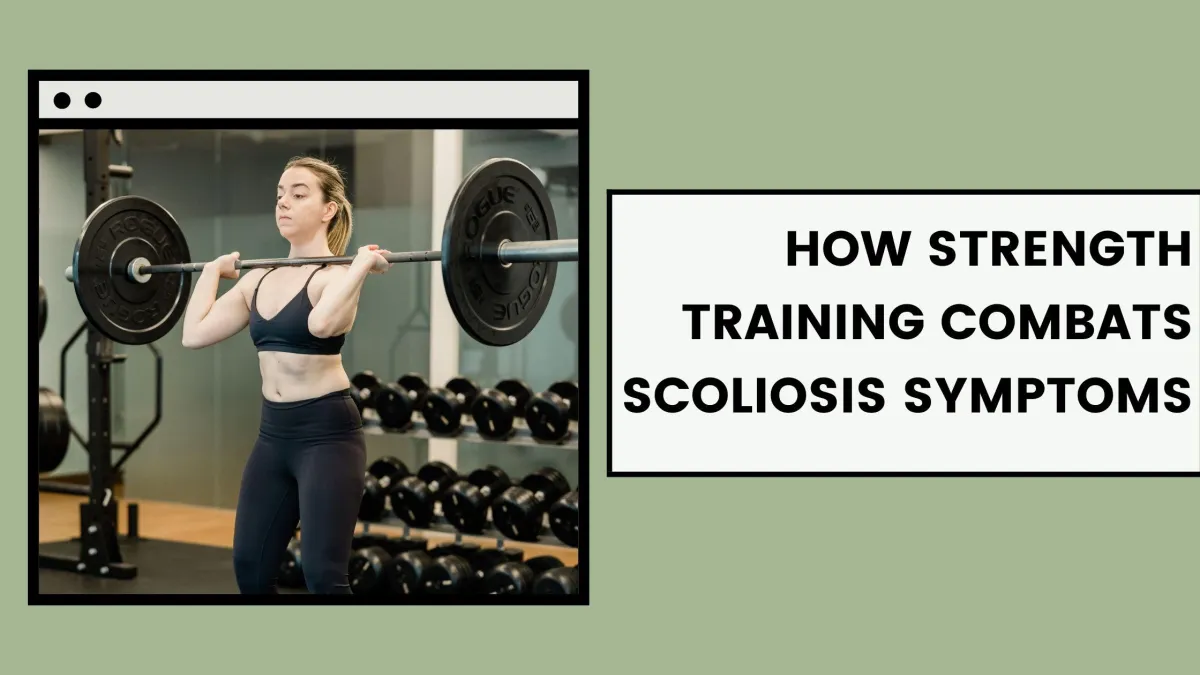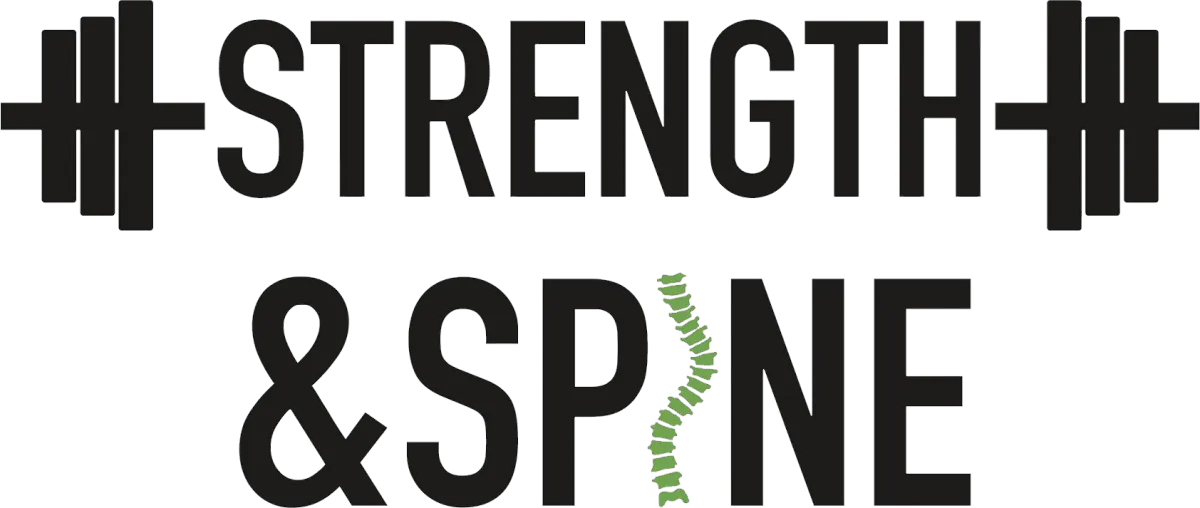Check Out The Latest Blog Posts To Learn More

From Pain to Power: How Strength Training Combats Scoliosis Symptoms
From Pain to Power: How Strength Training Combats Scoliosis Symptoms
Scoliosis can feel like an uphill battle. Persistent pain, limited mobility, and the emotional toll of living with a spinal condition can impact your daily life. But what if there was a way to harness your own strength to fight back? For many, strength training has become a path from pain to power—transforming not only their physical health but also their confidence and quality of life. This blog will explore how weightlifting can combat scoliosis symptoms, share inspiring real-life stories, and provide practical advice to help you get started on your own strength training journey.
Living with Scoliosis: The Challenge
Scoliosis isn’t just about the curve in your spine; it’s about everything that comes with it. Pain, muscle imbalances, postural challenges, and limits on what you feel your body can do. Simple activities like household chores or prolonged sitting can become sources of discomfort.
Many people find that traditional methods of managing scoliosis, like bracing or pain relief medication, help but don’t fully address the root of the problem. That’s where strength training comes in—an empowering and proactive tool to take control of your body’s potential.
How Strength Training Can Transform Lives
Strength training does more than just build muscle. It can specifically target the areas most affected by scoliosis:
Pain Reduction: By strengthening the muscles supporting the spine, lifting reduces the stress on your vertebrae and mitigates pain.
Improved Posture: Correcting muscle imbalances helps create a more symmetrical and stable foundation.
Functional Movement: Everyday tasks become easier as strength training builds coordination and endurance.
Mental Health Boost: Regular exercise releases endorphins and builds a sense of achievement—helping you feel strong not just physically, but mentally, too.
The beauty of strength training lies in its adaptability. Exercises can be modified to suit every body type, curvature, and fitness level.
From the Gym Floor to Victory: Real Stories of Transformation
Sometimes, the most inspiring proof comes from those who’ve walked the same path. Here are two powerful stories of people who turned weightlifting into their secret weapon against scoliosis:
Sarah’s Journey to Pain-Free Living
Sarah, a 35-year-old teacher, struggled for years with sharp pains in her lower back caused by scoliosis. She avoided the gym, fearing it might worsen her condition. That changed when her friend, a personal trainer, invited her to try a few beginner strength exercises.
Starting with basic movements like bodyweight squats and light dumbbell rows, Sarah noticed small changes immediately. “It felt like my back was being held together for the first time,” she said. Over the months, these exercises helped her build stronger postural muscles. Not only did her pain subside, but she could stand for long periods without discomfort—a game-changer in her career.
Daniel’s Confidence Reclamation
Daniel, a high school student with a significant spinal curve, found scoliosis held him back from sports and social life. Struggling with insecurities about his posture, he often slouched or avoided group activities.
Eventually, Daniel decided enough was enough and started weight training. With guidance, he gradually progressed from resistance bands to compound lifts like deadlifts and lat pulldowns. Over time, Daniel noticed improvements in the symmetry of his stance and his overall strength. More importantly, he gained confidence in his body’s abilities. “Lifting weights didn’t just change my back—it changed my life,” he shared proudly.
What Do These Stories Have in Common?
Both Sarah and Daniel started cautiously, worked consistently, and focused on functional strength exercises that targeted their specific needs. They turned fear into action, proving that pain doesn’t have to define you.
Motivational Insights to Take the First Step
You Are Stronger Than You Think: Your curve doesn’t define your capability. Your body has the potential to become stronger—you just need the right tools to unlock it.
Progress Over Perfection: Small, consistent steps are all you need. Even five minutes a day of activity can begin to ease pain and build resilience.
You Deserve to Feel Powerful: Exercise isn’t punishment for your body; it’s a way to nourish and support it. Celebrate every small victory, whether it’s managing one push-up or perfecting your deadlift form.
Practical Advice for Starting Strength Training with Scoliosis
Motivated to try strength training? Here’s how to do it safely and effectively:
1. Start with the Basics
Begin with bodyweight exercises to build foundational strength. Moves like planks, bridges, and bird dogs not only strengthen your muscles but also teach you control and stability.
2. Prioritize Core Engagement
Your core muscles are the protective belt you need to support your spine. Focus on low-impact exercises that keep your core engaged, such as dead bugs or modified planks.
3. Work with a Professional
If you’re new to strength training, consider working with a trainer or physical therapist who understands scoliosis. They’ll craft a safe program tailored to your needs.
4. Use Resistance Bands
Resistance bands are an excellent tool for beginners. They’re low impact and perfect for strengthening upper and lower body muscles without putting excess strain on the spine.
5. Monitor Your Progress and Be Patient
Consistency is key. Even if your improvements feel subtle at first, stick with it. Each step forward brings long-term benefits.
6. Listen to Your Body
While strength training should challenge you, it shouldn’t cause sharp pain. Modify or skip exercises that don’t feel right for your body.
Your Journey from Pain to Power Starts Now
Strength training isn’t just a workout—it’s an act of reclaiming control over your body and your life. For those living with scoliosis, the weight of uncertainty and discomfort can feel overwhelming. But with the right exercises, mindset, and guidance, you can lift far more than just weights. You can lift the limits scoliosis has placed on your life.
Whether your first step is picking up a resistance band or walking into the gym, know this: you are capable. You are resilient. And the strength you build will take you far beyond the gym floor—it will take you toward the life you deserve.
Ready to start your own transformation? The weights are waiting, and so is your victory.
WE ARE
Strong with Scoliosis
Start today on an exercise program that helps you become empowered, strong, and confident in your scoliosis curve.
FIND US
Strength and Spine
Online Sessions and Coaching
We work with clients all over the world
*Please contact us for in-person appointments*

